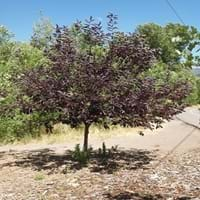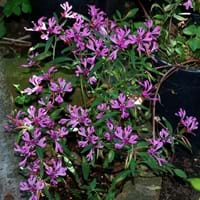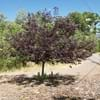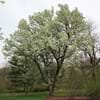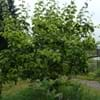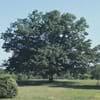Life Span
Perennial
Annual
Type
Tree
Flowering Plants
Origin
North America
United States, California
Types
Not Available
Santa Clara red ribbons, red ribbons, Raiche's red ribbons
Number of Varieties
Not Available
Habitat
Moist Soils, open Woodlands, Pine barrens, Swamps
Dry areas, foothill woods
USDA Hardiness Zone
3-8
Not Available
Sunset Zone
A1, A2, A3, 1a, 1b, 2a, 2b, 3a, 3b, 10, 16
A3, 1a, 1b, 2a, 2b, 3a, 3b, 4, 5, 6, 7, 8, 9, 10, 11, 12, 13, 14, 15, 16, 17, 18, 19, 20, 21, 22, 23, 24
Habit
Thicket/Colonizing
Clump-Forming
Flower Color
Not Available
Pink, Fuchsia, Rose, Lavender
Flower Color Modifier
Bicolor
Bicolor
Fruit Color
Not Available
Not Available
Leaf Color in Spring
Not Available
Green, Gray Green
Leaf Color in Summer
Not Available
Green, Gray Green
Leaf Color in Fall
Not Available
Green, Gray Green
Leaf Color in Winter
Not Available
Light Green
Plant Season
Spring, Summer, Fall
Spring, Summer
Sunlight
Full Sun, Partial Sun, Partial shade
Partial Sun, Partial shade
Type of Soil
Clay, Loam, Sand
Loam, Sand
The pH of Soil
Acidic, Neutral, Alkaline
Neutral
Soil Drainage
Average
Well drained
Bloom Time
Spring
Spring, Late Spring, Early Summer, Summer
Tolerances
Not Available
Not Available
Where to Plant?
Ground
Container, Ground, Pot
How to Plant?
Grafting, Seedlings, Stem Planting
Seedlings, Stem Planting
Plant Maintenance
Medium
Medium
Watering Requirements
Keep the ground moist but not water-logged, Requires regular watering
Allow to dry out slightly between watering
In Summer
Lots of watering
Lots of watering
In Spring
Moderate
Moderate
In Winter
Average Water
Average Water
Soil pH
Acidic, Neutral, Alkaline
Neutral
Soil Type
Clay, Loam, Sand
Loam, Sand
Soil Drainage Capacity
Average
Well drained
Sun Exposure
Full Sun, Partial Sun, Partial shade
Part sun, Partial shade
Pruning
Remove branches that rub together, Remove dead branches
Remove damaged leaves, Remove dead branches, Remove dead leaves
Fertilizers
All-Purpose Liquid Fertilizer
All-Purpose Liquid Fertilizer
Pests and Diseases
Red blotch
Red blotch
Plant Tolerance
Drought
Drought
Flower Petal Number
Not Available
Single
Showy Foliage
No
Not Available
Foliage Texture
Not Available
Fine
Foliage Sheen
Not Available
Matte
Attracts
Birds, Butterflies
Butterflies
Allergy
Not Available
Not Available
Aesthetic Uses
Beautification, Showy Purposes
Showy Purposes
Beauty Benefits
Not Available
Not Available
Environmental Uses
Air purification
Air purification
Medicinal Uses
Asthma, Bronchitis, Cough, Diarrhea, Dysentry, Fever, Stomach Ulcers
Not Available
Part of Plant Used
Bark, Fruits
Not Available
Other Uses
Used As Food
Used as Ornamental plant, Used for its medicinal properties
Used As Indoor Plant
No
No
Used As Outdoor Plant
Yes
Yes
Garden Design
Foundation, Hedges, Mixed Border, Screening / Wind Break, Shade Trees
Bedding Plant, Showy Tree
Botanical Name
PRUNUS virginiana
CLARKIA concinna
Common Name
Wild black cherry, Cherry bark
Red Ribbons
In Hindi
Chokecherry
Clarkia concinna
In German
Chokecherry
Clarkia concinna
In French
Chokecherry
Clarkia concinna
In Spanish
Chokecherry
concinna clarkia
In Greek
Chokecherry
Clarkia concinna
In Portuguese
Chokecherry
Clarkia concinna
In Polish
Chokecherry
klarkia concinna
In Latin
chokecherry
Clarkia concinna
Phylum
Magnoliophyta
Tracheophyta
Class
Magnoliopsida
Magnoliopsida
Family
Rosaceae
Onagraceae
Clade
Angiosperms, Eudicots, Rosids
Angiosperms, Eudicots, Rosids
Tribe
Amygdaleae
Not Available
Subfamily
Amygdaloideae
Not Available
Number of Species
Not Available
Not Available
Importance of Chokecherry and Clarkia concinna
Want to have the most appropriate plant for your garden? You might want to know the importance of Chokecherry and Clarkia concinna. Basically, these two plants vary in many aspects. Compare Chokecherry and Clarkia concinna as they differ in many characteristics such as their life, care, benefits, facts, etc. Every gardener must at least have the slightest clue about the plants he wants to plant in his garden. Compare their benefits, which differ in many ways like facts and uses. The medicinal use of Chokecherry is Asthma, Bronchitis, Cough, Diarrhea, Dysentry, Fever and Stomach Ulcers whereas of Clarkia concinna is Not Available. Chokecherry has beauty benefits as follows: Not Available while Clarkia concinna has beauty benefits as follows: Not Available.
Compare Facts of Chokecherry vs Clarkia concinna
How to choose the best garden plant for your garden depending upon its facts? Here garden plant comparison will help you to solve this query. Compare the facts of Chokecherry vs Clarkia concinna and know which one to choose. As garden plants have benefits and other uses, allergy is also a major drawback of plants for some people. Allergic reactions of Chokecherry are Not Available whereas of Clarkia concinna have Not Available respectively. Having a fruit bearing plant in your garden can be a plus point of your garden. Chokecherry has showy fruits and Clarkia concinna has no showy fruits. Also Chokecherry is not flowering and Clarkia concinna is not flowering . You can compare Chokecherry and Clarkia concinna facts and facts of other plants too.
